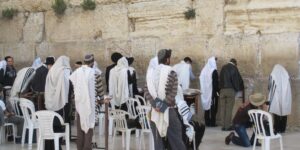Prophetic Fulfillment: Regathering the ‘Lost Tribes’ of Israel
Since the Assyrians invaded their land and led them into captivity in 722 B.C., the whereabouts of the northern tribes of Israel has remained one of the great mysteries of antiquity. Unlike those in the southern kingdom of Judah, who returned to Jerusalem and rebuilt the Temple after 70 years in captivity under the Babylonians (586-516 B.C.), there is no record in the Bible of the northern tribes ever returning.
In fact, these “lost tribes of Israel,” in a wider sense, include more than just the 10 tribes that vanished from the stage of history after the Assyrians took them captive. Ezra and Nehemiah both relay that only a remnant returned to Jerusalem with them from the Babylonian captivity. What happened to the rest of the southern kingdom, members of the tribes of Judah and Benjamin? And what of the Jews remaining in Israel following the destruction of Jerusalem and the Temple in 70 A.D. and the final revolt against the Romans in 136 A.D.? They were banished from their land, scattered to the nations of the world and became known as the diaspora, or dispersion.
Jews wandered from nation to nation throughout Europe during the Middle Ages as they were expelled from their host nations. Jews living in Italy were banished in 855 A.D. and from England in 1290. During the Spanish Inquisition (1492-97), the Jews of Spain (1492) and later Portugal (1497) were expelled and migrated to the Ottoman Empire, North Africa and the Netherlands. Many also ended up in South and Central America and are known today as Marranos, Conversos or Anusim (translated “retrained ones”).
Commerce also played a role in Jewish migration into other nations of the world. Merchants in search of treasures from the Middle East established trade routes into Asia and Africa. One of the most famous of these was the “Silk Road,” a 4,000-mile trek that connected silk traders in China with consumers in the Middle East. This route brought Persian Jews and other Jewish merchants into China. By the year 1200, there was a thriving Jewish community in Kaifeng until a flood of the Yellow River in 1850 destroyed their synagogue.
I had the opportunity to travel to Kaifeng on an outreach led by my good friend Sid Roth back in 1995 to scout out the Jewish community remaining there. Although we only met a handful of these Chinese Jews, this trip led me on a journey that has continued to this day—searching out and working to aid and restore the scattered children of Israel. The experience has felt like an Indiana Jones adventure, but instead of searching for the lost Ark of the Covenant, I have been in search of the lost people of the Covenant. This quest has since taken me to some of the most remote areas of the world.
God warned Israel that if they were not faithful to obey His laws and commandments, He would banish them from their land to wander the nations: “The Lord will scatter you among all the peoples, from one end of the earth to the other” (Deut. 28:64).
Indeed, this came to pass. The descendants of Jacob have been scattered to almost every nation on earth. But in His mercy and faithfulness, God also promised the day would come when He would bring them back: “When all these things happen to you, the blessing and the curse, which I have set before you, and you remember them among all the nations, where the Lord your God has driven you, then you must return to the Lord your God and obey His voice according to all that I am commanding you today, you and your children, with all your heart, and with all your soul. Then the Lord your God will overturn your captivity and have compassion on you and will return and gather you from all the nations, where the Lord your God has scattered you” (Deut. 30:1-3).
While these tribes may be lost to the world, God knows who and where each one of them is. I believe we are living in those days of restoration. Indeed, many of these Jewish communities are now coming to light and being recognized by the State of Israel.







































